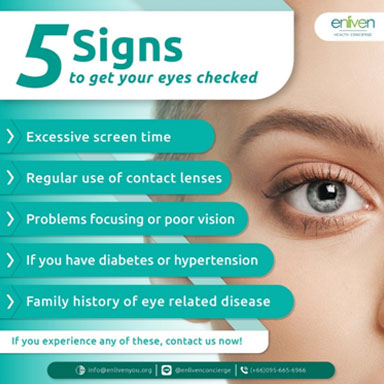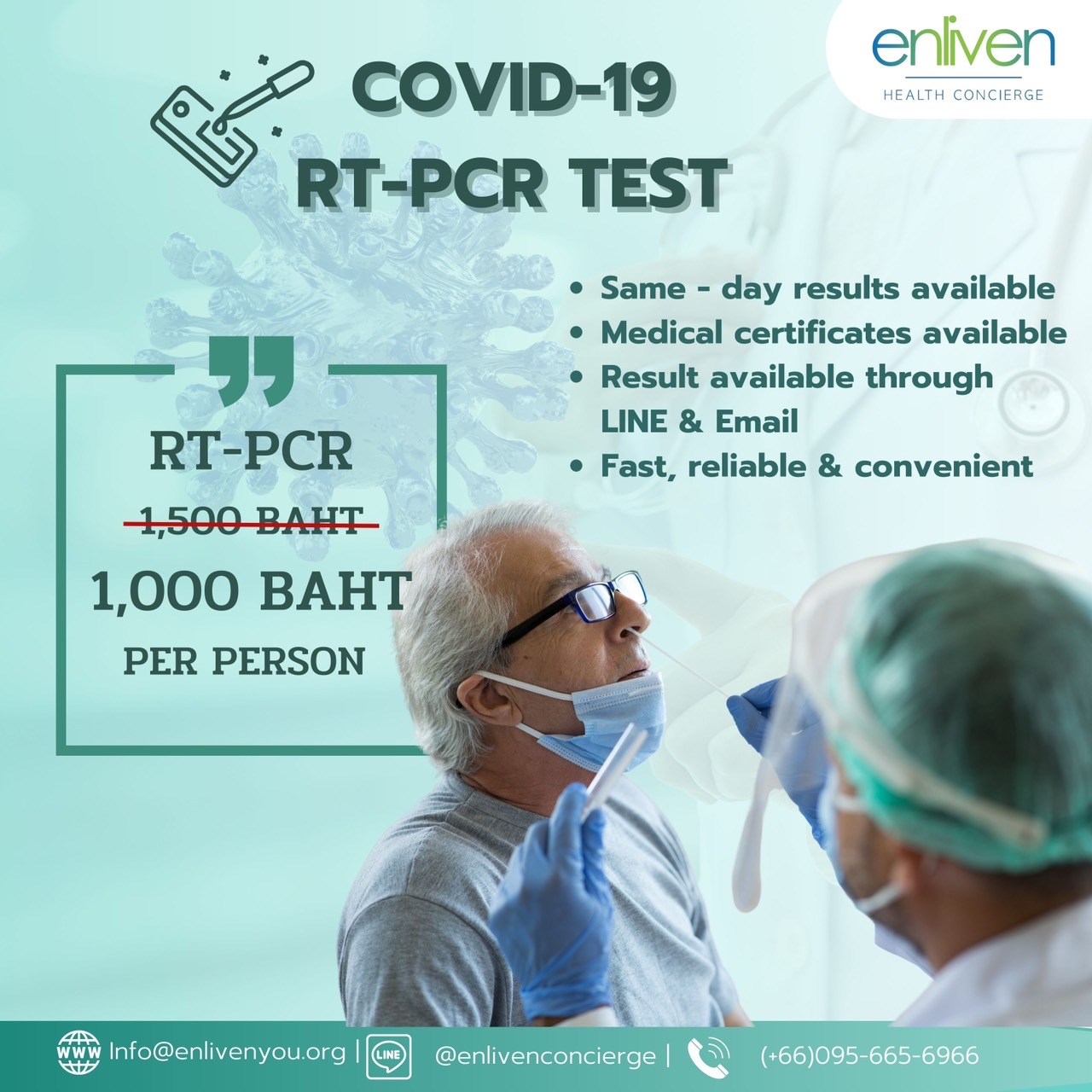– by Pirunrat Nathchayanonth (Yori), Client Coordinator

When we talk about a “Check-up” what do you normally think about?
I’ll be honest, for me, it would mean drawing blood and peeing in the cup. Chest x-ray and a consultation where the doctor would just tell me if there’s something that I should be worry about. And again, I wasn’t even thinking about having my eyes checked along with it. And usually the basic health check-up doesn’t include that. I only go and see an ophthalmologist when I need a new prescription because my glasses are getting blurry again. Is anyone like me?

But you definitely should get your eyes checkedproperly and as regularly as you’re getting your general health checks. Not only because these are delicate organs that’s used constantly throughout the day from the moment you open them up until the time you shut them again, but also because “Some eye diseases may not show any symptoms at the initial stage such as glaucoma, Macular degeneration, Diabetic Retinopathy.” – Phyathai Hospital
What are they? And how do you know if you have it or are at risk?
Glaucoma is a common eye condition where the optic nerve, which connects the eye to the brain, becomes damaged. It’s usually caused by fluid building up in the front part of the eye, which increases pressure inside the eye. Glaucoma can lead to loss of vision if it’s not diagnosed and treated early.

Symptoms of Glaucoma
A. Intense eye pain
B. Nausea and vomiting
C. Having a red eye
D. Headache
E. Tenderness around the eyes
F. Seeing rings around lights
G. Blurred vision

Macular degeneration
Age-related macular degeneration (AMD) is a problem with your retina. It happens when a part of the retina called the macula is damaged. With AMD you lose your central vision. You cannot see fine details, whether you are looking at something close or far. But your peripheral (side) vision will still be normal. For instance, imagine you are looking at a clock with hands. With AMD, you might see the clock’s numbers but not the hands.
AMD is very common. It is a leading cause of vision loss in people 50 years or older. There are two types of MD
1. Dry AMD – About 80% of people who have AMD have the dry form. Dry AMD is when parts of the macula get thinner with age and tiny clumps of protein called drusen grow. You slowly lose central vision. There is no way to treat dry AMD yet.
2. Wet AMD – This form is less common but much more serious. Wet AMD is when new, abnormal blood vessels grow under the retina. These vessels may leak blood or other fluids, causing scarring of the macula. You lose vision faster with wet AMD than with dry AMD. Many people don’t realize they have AMD until their vision is very blurry. This is why it is important to have regular visits to an ophthalmologist. He or she can look for early signs of AMD before you have any vision problems.

Symptoms of Macular Degeneration
A. Reduction in central vision
B. Distortion of straight lines in your field of vision
C. The need for brighter lighting
D. Difficulty adapting to low lights
E. Blurriness
F. Trouble recognizing faces
G. Retinal damage
Some symptoms of wet macular degeneration resemble those of dry macular degeneration, such as visual distortions and reduced central vision.
If you have wet macular degeneration, you may also experience:
A. A blurry spot in your field of vision
B. A dark spot in the center of your vision due to blood vessels bleeding or leaking fluid
C. Hazy vision
D. Rapidly worsening symptoms
Wet macular degeneration progresses more quickly than dry macular degeneration.
Diabetic Retinopathy is an eye condition that can cause vision loss and blindness in people who have diabetes. It affects blood vessels in the retina (the light-sensitive layer of tissue in the back of your eye).

Symptoms of Diabetic Retinopathy
The early stages of diabetic retinopathy usually don’t have any symptoms. Some people notice changes in their vision, like trouble reading or seeing faraway objects. These changes may come and go.

In later stages of the disease, blood vessels in the retina start to bleed into the vitreous (gel-like fluid in the center of the eye). If this happens, you may see dark, floating spots or streaks that look like cobwebs. Sometimes, the spots clear up on their own — but it’s important to get treatment right away. Without treatment, the bleeding can happen again, get worse, or cause scarring.
Cataracts
Cataracts are an eye condition caused when the lens of the eye develops cloudy patches. Over time these patches usually grow bigger, causing blurry, misty vision.

There are different types of cataracts, depending on which part of the eye’s lens is affected: they can affect the centre, the sides, or the back of the lens. They can appear in just one eye or in both eyes, although they may not develop at the same time. Eventually, if they’re not treated, cataracts can lead to blindness.
Symptoms of cataracts
• Blurred, dim or misty vision
• Difficulty seeing in low light or at night
• Sensitivity to light: lights look too bright or glaring
• Colors look faded or muted
• Seeing a ‘halo’ around bright lights
• Everything looks more ‘washed out’

If you have cataracts, things can start to look dim, blurred or distorted, as if you’re looking through dirty glass. Your vision may seem cloudy, and it can also be hard to make out details or colors.

I know they’re all sound scary. Like mentioned, these diseases normally doesn’t show the abnormalities right away. They take time to build up and sometimes before you know it, it’s too late.
Don’t wait until something goes wrong! You can call us now to book your appointment for eye check-up as a preventive plan. Or if you want to fix what is already fault, we can connect you to the right specialist who will recommend the most suitable treatment for you. Contact us now, we are here to help 😊
Sources for more information
- https://www.phyathai.com/article_detail/3166/en/Why_we_have_to_get_comprehensive_eye_examination
- https://www.nhs.uk/conditions/glaucoma/
- https://www.aao.org/eye-health/diseases/amd-macular-degeneration
- https://www.nei.nih.gov/learn-about-eye-health/eye-conditions-and-diseases/diabetic-retinopathy
- https://www.sightsavers.org/protecting-sight/what-are-cataracts/?gclid=CjwKCAjwos-HBhB3EiwAe4xM9xaSa3rbg0lCIO0StSezicPhrxzQhhL4fgn6mwgGIDVvTY01AVoITBoCrFUQAvD_BwE

